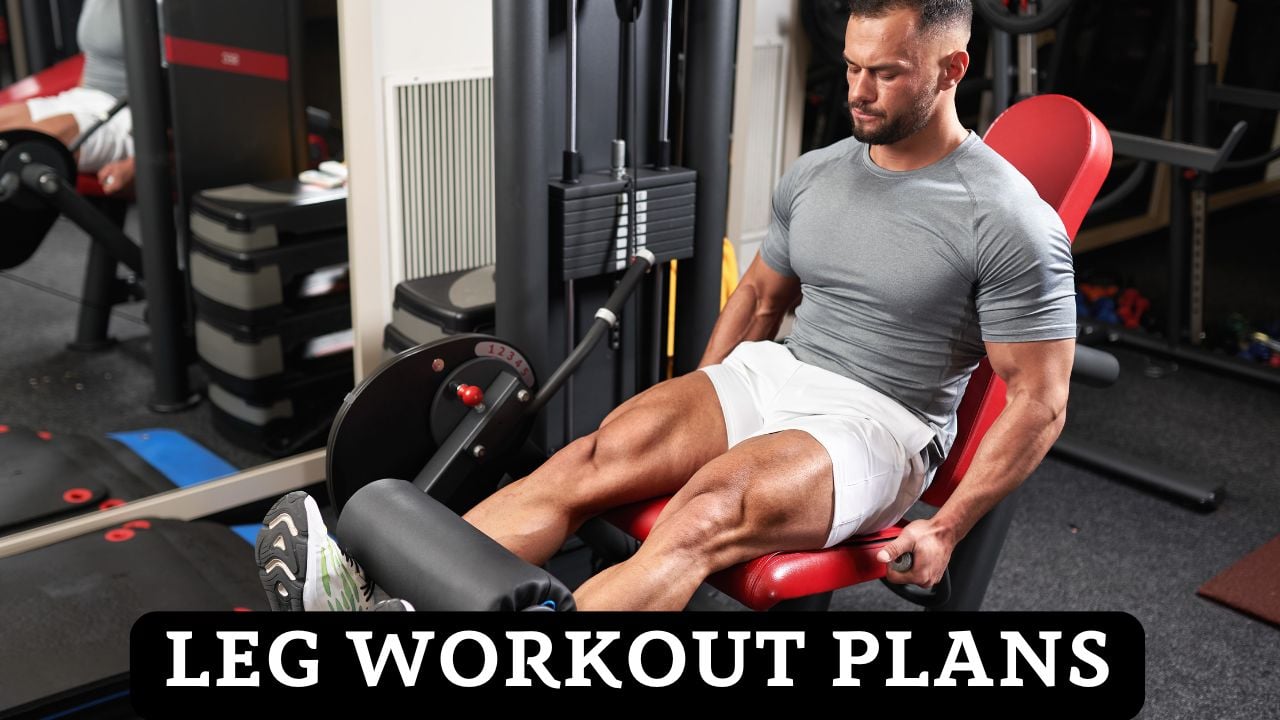Leg Workout Planner
Create your personalized leg workout program with our AI-powered planner. Get tailored routines that match your goals, experience level, and equipment preferences.

Basic Workout Information
Leg Focus Areas
Available Equipment
Additional Target Areas
Health Considerations
Leg Workout Program
This comprehensive leg workout program is based on scientific research and peer-reviewed literature. Well-developed legs form the foundation of total-body strength, athletic performance, and metabolic health. This program targets all major muscle groups of the lower body with specific exercises and training parameters proven to maximize strength development, muscle growth, and functional performance.
Research-Backed Leg Training Principles
Hormonal Response
Research published in the International Journal of Exercise Science (2021) demonstrates that lower body resistance exercise produces significant increases in anabolic hormones including growth hormone and testosterone. These acute hormonal responses may contribute to overall muscle development and recovery. The study found that high-volume, moderate-load protocols (10-15 reps at 60-70% 1RM) produced greater hormonal responses than low-volume, high-load training.
Training Variables
Studies show that leg development is optimized through careful manipulation of training variables. Research indicates that training with a variety of rep ranges (5-30), incorporating both compound and isolation exercises, and allowing adequate recovery (48-72 hours between leg sessions) produces optimal results. For strength development, heavier loads (80-90% 1RM) with longer rest periods (2-3 minutes) have proven most effective. Learn more about optimizing training variables from Healthline’s guide on leg workouts.
Exercise Selection
EMG research has identified the exercises that produce the highest activation of leg muscles. Squats, deadlifts, and lunges consistently emerge as the most effective exercises for overall lower body development. For targeted development, research shows that leg extensions maximize quadriceps activation, while leg curls optimally engage the hamstrings. For calf development, both seated and standing variations are necessary to target all heads of the gastrocnemius and soleus muscles. Discover the best leg exercises for strength based on current research.
Benefits of Leg Training
Metabolic Enhancement
According to research published on MedicineNet, leg workouts stimulate the largest muscle groups in the body, significantly increasing energy expenditure and metabolic rate. Studies show that compound leg exercises can elevate metabolism for up to 48-72 hours post-workout. This leads to improved body composition, enhanced insulin sensitivity, and more efficient nutrient partitioning, supporting overall health and fitness goals.
Hormonal Optimization
Research by Jakobsson et al. (2021) found that lower body resistance training stimulates the release of anabolic hormones like growth hormone and testosterone. These hormones support muscle development throughout the entire body, not just the legs. The hormonal “spillover” effect makes leg training crucial even for those primarily focused on upper body development.
Functional Performance
Healthline reports that strong legs are fundamental to daily activities, athletic performance, and injury prevention. Research shows that regular leg training improves walking efficiency, running speed, jumping ability, and balance. Additionally, strong leg muscles protect the knees and hips from injury by improving joint stability and reducing the risk of falls, particularly important as we age.
Designing an Effective Leg Workout
Movement Pattern Principle
Research indicates that optimal leg development requires targeting all movement patterns: hip-dominant (deadlifts, hip thrusts), knee-dominant (squats, leg press), single-leg (lunges, step-ups), and ankle movements (calf raises). Studies show that balancing these movement patterns ensures complete development of all lower body musculature while preventing imbalances that can lead to postural problems and injuries.
Progressive Overload Strategy
According to research, consistent progress in leg development requires systematic progressive overload. Studies show that alternating between different overload mechanisms (weight increases, volume increases, decreased rest periods, and enhanced time under tension) prevents plateaus and stimulates continued adaptation. Research suggests cycling these variables every 4-6 weeks while gradually increasing overall training volume by 5-10% per week maximizes gains while minimizing injury risk.
Most Effective Leg Exercises
Barbell Back Squat
Research identifies the barbell back squat as the most effective overall lower body exercise. EMG studies show it activates the quadriceps, hamstrings, glutes, and core simultaneously. A 2021 study found that squats performed to proper depth (thighs parallel to floor or below) produced 25% greater quadriceps activation and 45% greater glute activation compared to partial squats, making proper form essential for optimal results.
Romanian Deadlift
EMG research shows the Romanian deadlift produces the highest activation of the hamstrings among all common leg exercises. Studies also indicate significant glute and erector spinae engagement. Research published by Healthline suggests that maintaining a neutral spine and focusing on hip hinge mechanics maximizes effectiveness while minimizing injury risk, making this exercise particularly valuable for posterior chain development.
Bulgarian Split Squat
Studies show that unilateral exercises like the Bulgarian split squat address muscle imbalances while providing significant quadriceps, hamstring, and glute activation. Research found that split squats produced 85% of the muscle activation of traditional squats in the target leg, but with reduced spinal loading, making them particularly valuable for those with back concerns while still providing substantial growth stimulus.
Hip Thrust
Hip thrust as producing the highest gluteal activation among all lower body exercises. EMG studies show up to 1.5 times greater glute activation compared to squats. The exercise’s effectiveness comes from maximally loading the glutes at their end range, where they can generate the most force. Research indicates that elevating the shoulders slightly increases range of motion and effectiveness.
Leg Press
Studies show the leg press allows for heavy quadriceps loading with reduced technical demand compared to free-weight exercises. Research indicates that foot position significantly affects muscle recruitment—higher foot placement increases hamstring and glute involvement, while lower foot placement maximizes quadriceps activation. This versatility makes the leg press valuable for targeting specific lower body weaknesses. Find more information about various leg workout machines to incorporate in your training.
Standing Calf Raise
Research shows that standing calf raises primarily target the gastrocnemius (the larger, visible calf muscle), while seated variations emphasize the soleus (the deeper calf muscle). EMG studies found that performing calf exercises with a full range of motion—from a complete stretch at the bottom to a full contraction at the top—produced significantly greater results than partial repetitions, highlighting the importance of proper execution.
Progressive Leg Development Program
Select your experience level to view the appropriate leg workout plan. Each level is designed based on scientific research to progressively overload the leg muscles for optimal development with special emphasis on balanced development of all lower body musculature.
| Exercise | Sets/Reps | Rest | Notes |
|---|---|---|---|
| Goblet Squats | 3 sets, 10-12 reps | 90 sec | Focus on depth and maintaining upright posture |
| Dumbbell Romanian Deadlift | 3 sets, 10-12 reps | 90 sec | Emphasize hip hinge pattern and hamstring stretch |
| Walking Lunges | 2 sets, 10-12 reps per leg | 60 sec | Step naturally, maintain balance and control |
| Leg Press | 3 sets, 12-15 reps | 90 sec | Use moderate weight, focus on full range of motion |
| Standing Calf Raises | 3 sets, 15-20 reps | 60 sec | Full stretch at bottom, complete contraction at top |
Related
- Workout Plans for Men
- Badminton Calories Burned Calculator
- Boxing Calories Burned Calculator
- Plank Calories Burned Calculator
- Burpee Calories Burned Calculator
- Crunches Calories Burned Calculator
- Sit-Up Calories Burned
- Zumba Calories Burned Calculator
- Pull Up Calories Burned Calculator
- Push-Up Calories Burned Calculator
- Home Activities Calories Burned Calculator
- Exercise Calories Burned Calculator
- Running Calorie Calculator
- Walking Calorie Burned Calculator
References
- JAKOBSSON, J., THEOS, A., & MALM, C. (2021). Effects of Different Types of Lower Body Resistance Exercise on Upper-body Strength in Men and Women, with Special Reference to Anabolic Hormones. International Journal of Exercise Science, 14(3), 1052. https://doi.org/10.70252/DYRH9028
- Zhou, Bo & Sundholm, Mathias & Cheng, Jingyuan & Cruz, Heber & Lukowicz, Paul. (2016). Never Skip Leg Day: A Novel Wearable Approach to Monitoring Gym Leg Exercises. 10.1109/PERCOM.2016.7456520.
- STROLLO, S., CASEROTTI, P., WARD, R., GLYNN, N., GOODPASTER, B., & STROTMEYER, E. (2015). A REVIEW OF THE RELATIONSHIP BETWEEN LEG POWER AND SELECTED CHRONIC DISEASE IN OLDER ADULTS. The Journal of Nutrition, Health & Aging, 19(2), 240. https://doi.org/10.1007/s12603-014-0528-y

Manish is a NASM-certified fitness and nutrition coach with over 10 years of experience in weight lifting and fat loss fitness coaching. He specializes in gym-based training and has a lot of knowledge about exercise, lifting technique, biomechanics, and more.
Through “Fit Life Regime,” he generously shares the insights he’s gained over a decade in the field. His goal is to equip others with the knowledge to start their own fitness journey.
